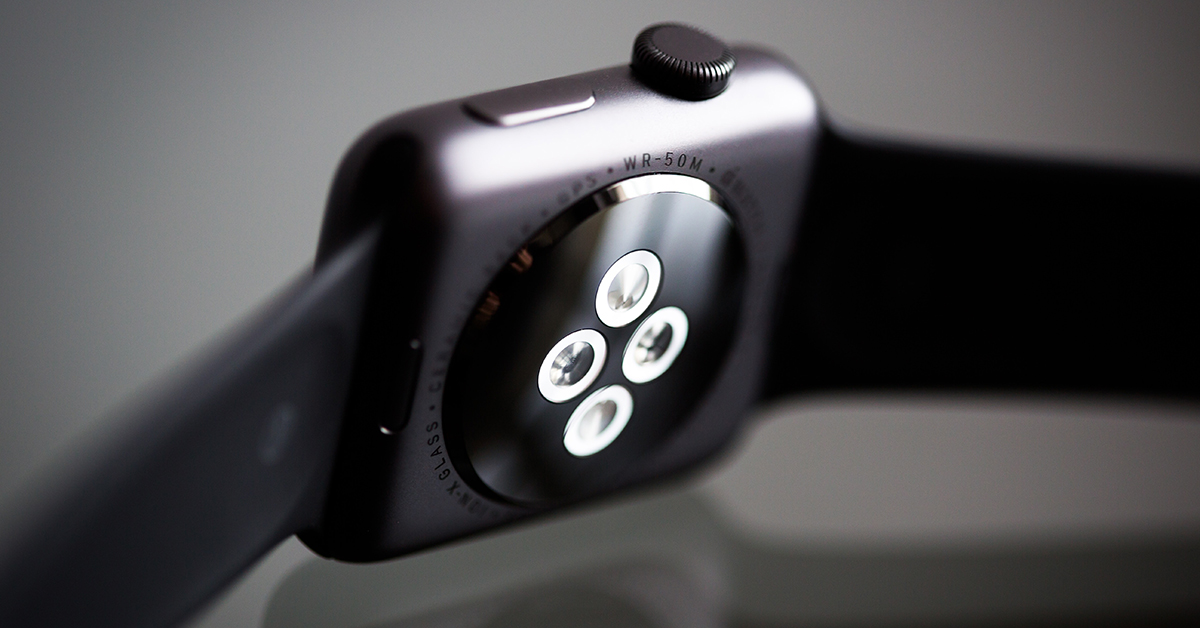The lights on a smartwatch are used for monitoring your heart rate. Some smart watches may even use these lights to also measure how well oxygenated your blood is. So, to be effective at measuring your heart rate and or blood oxygen saturation, your watch should fit well and not hang loose.
Whilst this article is written with sufficient technical and professional knowledge about wearable healthcare technology, the author takes no responsibility for any misunderstanding regarding medical terminology, and if you are in doubt about your own health then you should seek the advice of a qualified medical professional as soon as possible.



Table of Contents
Shining Lights to Measure Heart Rate
Those lights are in fact light emitting diodes (LEDs) and have a very specific colour that has been specially optimised for measuring heart rate and or the oxygen content of your blood. In fact if you have a watch that does measure your oxygen, then there are actually at least two different colours, one is just invisible infrared light. Measuring oxygen in your blood is a little more complicated than simply measuring heart rate though. More on that shortly.
So, how do those LEDs measure your heart rate? What is important to know here is that it is not the LED that does the measuring, that is the job in combination of a very tiny, very sensitive light sensor called a photodiode and the computer on your watch.
Light from the LEDs is shone through your wrist, bounces around, and eventually finds it’s way to the photodiode after it has travelled through the different tissues in your arm, including your blood. The pulsing blood in your wrist will absorb some of this light, more light is absorbed when there is more blood, and subsequently the less light that is sensed.
These momentary dips in light level are synchronous with your heart beat, and the clever on-board computer can sense and count these dips, or pulses and therefore calculate your heart rate. This method of detecting light through body tissue whilst it is being modulated by the changing volume of blood is called Photoplethysmography (pronounced FOTO-PLETH-IS-MOG-RAFFY).
Your Watch May be able to Measure Oxygen too!
Now, if your smart watch measures your oxygen too, this is the clever bit, and why you need more than one colour of light. Normally there are only two different types of blood circulating in your body, oxygenated blood (blood with dissolved oxygen in it) and deoxygenated blood (blood with no dissolved oxygen in it). These two types of blood can look distinctly different in colour, and we can take advantage of this by shining different colours of light into the body.
Normally the two light colours are red and infrared (invisible red light). The two colours (or wavelengths, if we want to be technical) of light will be absorbed by the two different types of blood by different and very measurable amounts, and this difference can also be seen by the light sensor in our watches. With some clever calculations these differences can be translated into how much of our circulating arterial blood is oxygenated, given as a percentage, with a normal healthy amount being 99 to 100%.
The Importance of Vital Signs Monitoring
Having a smart watch is no doubt helpful for any number of things, having instant access to your phone and many of it’s functions, or options for smart/contactless payment etc., whether is beneficial or not is of course a debate for another thread. The options for health monitoring of course are probably not up for debate though, as having access to an overview of our general fitness and activity is undoubtedly a good thing as we strive to live happy and healthier lives.
Tracking heart rate as you exercise can be key to vital health goals, such as cardio-vascular exercise, and smart watches that make these measurements automatically remove the need to stop and make repeated measurements. Heart rate monitoring is also vital in general and regular clinical monitoring, and abnormally low or high heart rates can be indicative of other underlying health problems.
There will always be an amount of oxygenated and deoxygenated blood in your body, the oxygenated blood is primarily carried by the arteries, and the deoxygenated blood is carried by the veins. What we are interested in is how much of the circulating arterial blood is oxygenated, because if the saturation is not high enough then our muscles and organs will be insufficiently supplied with oxygen and unable to function correctly.
It should be noted however, that the device in your watch will be less sophisticated and less reliable than the one your doctor has, so don’t use it as a reliable measure, if in any doubt about your own health then proper medical advice should always be sought.
The collective and proper name for these devices, when considered on their own, are pulse oximeters. If you wish to read more about the history of these devices, and their conception and invention then read our article about them here.

